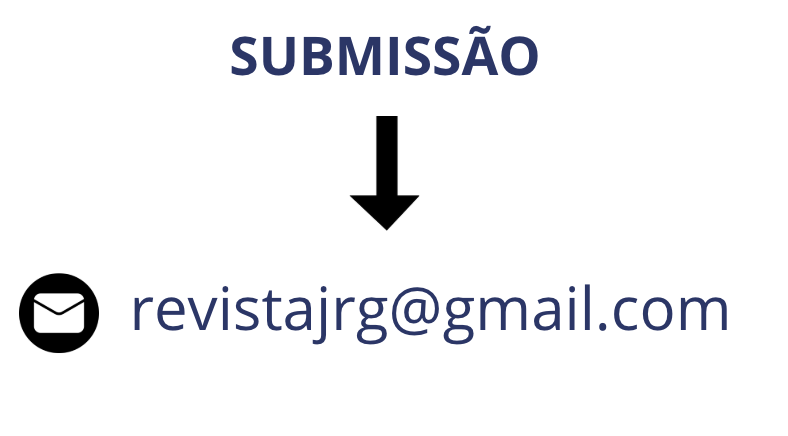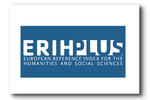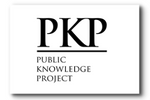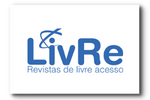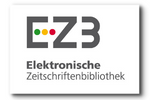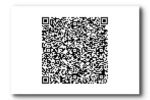Benefícios de simulações para o treinamento de habilidades na residência de anestesiologia: revisão sistemática
DOI:
https://doi.org/10.55892/jrg.v8i18.2016Palavras-chave:
Curva de aprendizado, Treinamento por simulação, Competência Profissional, Anestesiologia, Educação médicaResumo
Introdução: A formação médica exige a integração de conhecimentos teóricos e habilidades práticas para preparar residentes em anestesiologia a lidarem com os desafios clínicos da especialidade. Nesse contexto, o uso de simulações tem se mostrado essencial, permitindo o desenvolvimento de competências técnicas e não técnicas em um ambiente controlado e seguro. Objetivo: identificar e sintetizar evidências sobre os benefícios do uso de simulações para o treinamento de habilidades na residência de anestesiologia. Método: Foi realizada uma revisão de literatura seguindo as diretrizes PRISMA, analisando estudos de 2019 a 2024 nas bases PubMed e LILACS, focando em tipos de simulação, habilidades desenvolvidas e impacto clínico. Resultado: Foram selecionados 13 estudos, publicados entre 2020 e 2024, que destacaram benefícios como a maior precisão em procedimentos guiados por ultrassom, manejo eficaz de crises e maior segurança do paciente. Tecnologias como realidade virtual e inteligência artificial foram descritas como capazes de acelerar a curva de aprendizado e aprimorar a experiência educacional. Apesar dos avanços, a implementação de ambientes de simulação enfrenta desafios significativos. O alto custo dos equipamentos, a necessidade de infraestrutura avançada e a falta de padronização dos métodos dificultam a adoção em larga escala. Em regiões com recursos limitados, essas barreiras são ainda mais evidentes. Estratégias sugeridas incluem o uso de modelos acessíveis, feedback estruturado e treinamentos remotos, bem como a repetição periódica das sessões e a integração de simulações nos currículos médicos. Conclusão: Simulações contribuem para a formação em anestesiologia, melhorando habilidades técnicas e segurança. Apesar de custos e desafios logísticos, estratégias como tecnologias acessíveis e feedback estruturado podem ampliar sua eficácia e alcance.
Downloads
Referências
ABILDGREN, L. et al. The effectiveness of improving healthcare teams’ human factor skills using simulation-based training: a systematic review. Advances in Simulation, [s. l.], v. 7, n. 1, p. 12, 2022. Disponível em: https://advancesinsimulation.biomedcentral.com/articles/10.1186/s41077-022-00207-2. Acesso em: 7 abr. 2025.
BELFOR, J. A. et al. Competências pedagógicas docentes sob a percepção de alunos de medicina de universidade da Amazônia brasileira. Ciência & Saúde Coletiva, [s. l.], v. 23, n. 1, p. 73–82, 2018. Disponível em: http://www.scielo.br/scielo.php?script=sci_arttext&pid=S1413-81232018000100073&lng=pt&tlng=pt. Acesso em: 7 abr. 2025.
BHAGWAT, M. Simulation and anaesthesia. Indian Journal of Anaesthesia, [s. l.], v. 56, n. 1, p. 14–20, 2012. Disponível em: https://www.ncbi.nlm.nih.gov/pmc/articles/PMC3327064/. Acesso em: 7 abr. 2025.
BIELKA, K. et al. Difficult airway simulation-based training for anaesthesiologists: efficacy and skills retention within six months. BMC Anesthesiology, [s. l.], v. 24, n. 1, p. 44, 2024. Disponível em: https://doi.org/10.1186/s12871-024-02423-x. Acesso em: 7 abr. 2025.
BRASIL. Ministério da Saúde. Resolução CNE/CES no 3, de 20 de junho de 2014. Brasília, 2014. Disponível em: https://www.gov.br/saude/pt-br/acesso-a-informacao/acoes-e-programas/pnsp/legislacao/resolucoes/rces003_14.pdf/view. Acesso em: 7 abr. 2025.
BRASIL. Ministério da Educação. Resolução CNRM no 11, de 8 de abril de 2019. Diretrizes Curriculares Nacionais dos Programas de Residência Médica em Anestesiologia, Brasília, 2019. Disponível em: http://portal.mec.gov.br/index.php?option=com_docman&view=download&alias=111551-11-resolucao-n-11-de-8-de-abril-de-2019-anestesiologia&category_slug=abril-2019-pdf&Itemid=30192. Acesso em: 26 jan. 2025.
CHARONDO, L. B. et al. Confronting new challenges: Faculty perceptions of gaps in current laparoscopic curricula in a changing training landscape. Surgery Open Science, [s. l.], v. 16, p. 1–7, 2023. Disponível em: https://www.ncbi.nlm.nih.gov/pmc/articles/PMC10507640/. Acesso em: 7 abr. 2025.
CORVETTO, M. A. et al. Simulation-Based Training Program for Peripherally Inserted Central Catheter Placement: Randomized Comparative Study of in-Person Training With Synchronous Feedback Versus Distance Training With Asynchronous Feedback. Simulation in Healthcare: The Journal of the Society for Simulation in Healthcare, [s. l.], v. 19, n. 6, p. 373–378, 2024. Disponível em: https://journals.lww.com/10.1097/SIH.0000000000000805. Acesso em: 7 abr. 2025.
ELENDU, C. et al. The impact of simulation-based training in medical education: A review. Medicine, [s. l.], v. 103, n. 27, p. e38813, 2024. Disponível em: https://www.ncbi.nlm.nih.gov/pmc/articles/PMC11224887/. Acesso em: 7 abr. 2025.
GATES, R. S. et al. The Demands of Surgery Residency: More Than Just Duty Hours?. Journal of Surgical Research, [s. l.], v. 290, p. 293–303, 2023. Disponível em: https://linkinghub.elsevier.com/retrieve/pii/S0022480423002111. Acesso em: 7 abr. 2025.
GUTIÉRREZ-PERDOMO, V.; TEJADA-PERDOMO, J. H.; RAMOS-CASTANEDA, J. A. Airway management education and retraining: an unresolved paradigm. BMC Anesthesiology, [s. l.], v. 24, n. 1, p. 336, 2024. Disponível em: https://doi.org/10.1186/s12871-024-02637-z. Acesso em: 7 abr. 2025.
JENSEN, R. D. et al. Identifying technical skills and clinical procedures in surgery for a simulation-based curriculum: a national general needs assessment. Surgical Endoscopy, [s. l.], v. 36, n. 1, p. 47–56, 2022. Disponível em: https://link.springer.com/10.1007/s00464-020-08235-7. Acesso em: 7 abr. 2025.
LORELLO, G. R. et al. Simulation-based training in anaesthesiology: a systematic review and meta-analysis. British Journal of Anaesthesia, [s. l.], v. 112, n. 2, p. 231–245, 2014. Disponível em: https://linkinghub.elsevier.com/retrieve/pii/S0007091217319128. Acesso em: 7 abr. 2025.
MIYATA, H. et al. Validity assessment of the laparoscopic radical nephrectomy module of the LapVision virtual reality simulator. Surgery Open Science, [s. l.], v. 2, n. 1, p. 51–56, 2019. Disponível em: https://www.ncbi.nlm.nih.gov/pmc/articles/PMC8083013/. Acesso em: 7 abr. 2025.
MOHER, D. et al. Preferred Reporting Items for Systematic Reviews and Meta-Analyses: The PRISMA Statement. PLoS Medicine, [s. l.], v. 6, n. 7, p. e1000097, 2009. Disponível em: https://dx.plos.org/10.1371/journal.pmed.1000097. Acesso em: 7 abr. 2025.
MORRIS, O. D. et al. A Simulation-Based Training Program in Rapid Sequence Induction for Novice Anesthesiology Trainees Using a Novel Checklist. The Journal of Education in Perioperative Medicine : JEPM, [s. l.], v. 24, n. 4, p. E695, 2022. Disponível em: https://www.ncbi.nlm.nih.gov/pmc/articles/PMC9753963/. Acesso em: 7 abr. 2025.
MOSSENSON, A. I. et al. A competency framework for simulation facilitation in low‐resource settings: a modified Delphi study. Anaesthesia, [s. l.], v. 79, n. 12, p. 1300–1308, 2024. Disponível em: https://associationofanaesthetists-publications.onlinelibrary.wiley.com/doi/10.1111/anae.16446. Acesso em: 7 abr. 2025.
NORRIS, S. et al. Effect of a Surgical Teaching Video on Resident Performance of a Laparoscopic Salpingo-oophorectomy: A Randomized Controlled Trial. Journal of Minimally Invasive Gynecology, [s. l.], v. 27, n. 7, p. 1545–1551, 2020.
OH, E. J. et al. Simulation-based training using a vessel phantom effectively improved first attempt success and dynamic needle-tip positioning ability for ultrasound-guided radial artery cannulation in real patients: An assessor-blinded randomized controlled study. PLoS ONE, [s. l.], v. 15, n. 6, p. e0234567, 2020. Disponível em: https://www.ncbi.nlm.nih.gov/pmc/articles/PMC7289374/. Acesso em: 7 abr. 2025.
OKANO, D. R. et al. Stunned Myocardium as a Sequela of Acute Severe Anemia: An Adult Simulation Case for Anesthesiology Residents. MedEdPORTAL : the Journal of Teaching and Learning Resources, [s. l.], v. 20, p. 11432, 2024. Disponível em: https://www.ncbi.nlm.nih.gov/pmc/articles/PMC11377552/. Acesso em: 7 abr. 2025.
PAGE, M. J. et al. The PRISMA 2020 statement: an updated guideline for reporting systematic reviews. The BMJ, [s. l.], v. 372, p. n71, 2021. Disponível em: https://www.ncbi.nlm.nih.gov/pmc/articles/PMC8005924/. Acesso em: 27 jun. 2023.
RAMLOGAN, R. R.; CHUAN, A.; MARIANO, E. R. Contemporary training methods in regional anaesthesia: fundamentals and innovations. Anaesthesia, [s. l.], v. 76, n. S1, p. 53–64, 2021. Disponível em: https://associationofanaesthetists-publications.onlinelibrary.wiley.com/doi/10.1111/anae.15244. Acesso em: 7 abr. 2025.
ROTHKRUG, A.; MAHBOOBI, S. K. Simulation Training and Skill Assessment in Anesthesiology. In: STATPEARLS [INTERNET]. [S. l.]: StatPearls Publishing, 2023. Disponível em: https://www.ncbi.nlm.nih.gov/sites/books/NBK557711/. Acesso em: 7 abr. 2025.
SAVAGE, M.; SPENCE, A.; TURBITT, L. The educational impact of technology-enhanced learning in regional anaesthesia: a scoping review. British Journal of Anaesthesia, [s. l.], v. 133, n. 2, p. 400–415, 2024. Disponível em: https://linkinghub.elsevier.com/retrieve/pii/S0007091224002629. Acesso em: 7 abr. 2025.
SCHMITT, F. et al. Skills improvement after observation or direct practice of a simulated laparoscopic intervention. Journal of Gynecology Obstetrics and Human Reproduction, [s. l.], v. 47, n. 3, p. 101–106, 2018. Disponível em: https://linkinghub.elsevier.com/retrieve/pii/S2468784717302684. Acesso em: 7 abr. 2025.
SPILIOTIS, A. E.; SPILIOTIS, P. M.; PALIOS, I. M. Transferability of Simulation-Based Training in Laparoscopic Surgeries: A Systematic Review. Minimally Invasive Surgery, [s. l.], v. 2020, p. 1–10, 2020. Disponível em: https://www.hindawi.com/journals/mis/2020/5879485/. Acesso em: 7 abr. 2025.
SUET, G. et al. Use of an Observer Tool to Enhance Observers’ Learning of Anesthesia Residents During High-Fidelity Simulation: A Randomized Controlled Trial. Simulation in Healthcare: The Journal of the Society for Simulation in Healthcare, [s. l.], v. 17, n. 1, p. e75–e82, 2022. Disponível em: https://journals.lww.com/10.1097/SIH.0000000000000584. Acesso em: 7 abr. 2025.
SZMULEWICZ, C. et al. Interdisciplinary Simulation Courses to Train Residents on Communication of Unexpected Complications from Perioperative Care: A Randomized Comparison of Within-Event (Microdebriefing) and Postscenario Debriefing. Journal of Surgical Education, [s. l.], v. 81, n. 6, p. 858–865, 2024. Disponível em: https://linkinghub.elsevier.com/retrieve/pii/S1931720424001557. Acesso em: 7 abr. 2025.
VELÁSQUEZ-RIMACHI, V. et al. A 10-year bibliometric analysis of Latin America and the Caribbean healthcare simulation studies: focus on top-10 production trends. In: , 2024. Advances in Simulation. Meeting Abstracts for the Society for Simulation in Europe 2023. [S. l.: s. n.], 2024. p. 33, s41077-023-00270–00273. Disponível em: https://advancesinsimulation.biomedcentral.com/articles/10.1186/s41077-023-00270-3. Acesso em: 7 abr. 2025.
ZHOU, Z. et al. Evaluation of a 12-hole clock model for improving bronchoscopic skills in simulated normal and difficult airways among anesthesia residents: A randomized controlled study. Medicine, [s. l.], v. 103, n. 23, p. e38510, 2024. Disponível em: https://www.ncbi.nlm.nih.gov/pmc/articles/PMC11155588/. Acesso em: 7 abr. 2025.
Downloads
Publicado
Como Citar
Edição
Seção
ARK
Licença

Este trabalho está licenciado sob uma licença Creative Commons Attribution 4.0 International License.



